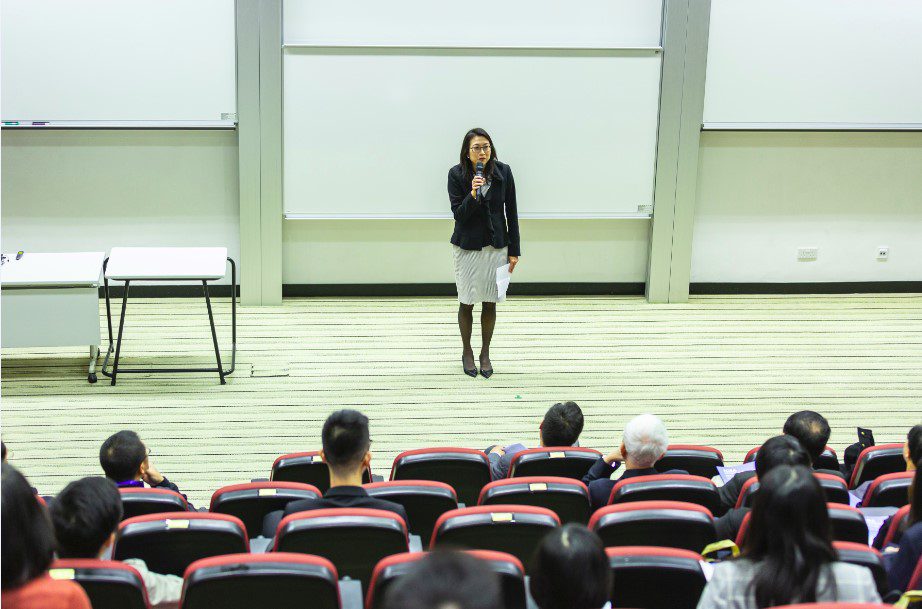Over the years, different approaches to education have emerged, each with its own set of advantages and disadvantages. One such approach is the one-size-fits-all model of education, as contrasted to personalized learning.
This model of education refers to an educational approach where uniform curriculum and teaching methods are applied to all students. This is implemented regardless of their individual needs, interests, or abilities.
With the one size fits all approach, it is assumed, therefore, that all students can learn effectively through the same instructional strategies. It aims to provide a standardized education, simplify administrative processes and ensure consistency across schools.
The one-size-fits-all model implies that a single curriculum and instructional method can cater to the diverse learning needs of students, without significant customization or differentiation.
The Origin of the One-Size-Fits-All Model of Education

The One-Size-Fits-All Model of Education can be traced back to the industrial era, in what was considered a ‘factory model’ education. The origins of the model was attributed to the need for a standardized education that catered to a large number of students with ease.
As industries expanded and societies modernized, there was a growing demand for a workforce with basic literacy and numeracy skills. In response to this demand, educational systems began implementing standard curricula and instructional methods.
The concept of a uniform education system gained traction due to several factors:
- Firstly, standardization simplified the administration of education by providing a structured framework that could be easily implemented across different schools and regions.
- It reduced the complexity of developing individualized curricula and instructional materials for each student.
- Additionally, the One-Size-Fits-All Model of Education was driven by the belief that all individuals could acquire knowledge and skills through the same instructional strategies and content delivery methods.
The industrial era also witnessed the rise of standardized testing as a means to assess and evaluate student performance and outcomes. The One-Size-Fits-All Model of Education aligned well with this assessment method. The method advocated for standardized tests that could measure students’ proficiency in a uniform manner.
While the One-Size-Fits-All Model of Education had its merits in terms of streamlining educational processes and ensuring equal opportunities, it also faced criticism for neglecting individual differences among learners.
As our understanding of education and human cognition has evolved, there has been a shift towards more personalized and student-centered approaches. This model acknowledges and caters to the diverse needs and interests of individual learners.
One Size Fits All Model vs Personalized Learning

The One-Size-Fits-All Model of Education and personalized education are two contrasting approaches to teaching and learning.
While the former emphasizes a standardized approach with uniform curricula and instructional methods, the latter focuses on tailoring education to meet the individual needs, interests, and abilities of students.
Let’s explore the differences between these two models:
1. Approach:
The One-Size-Fits-All Model follows a one-size-fits-all approach, treating all students as a homogeneous group and delivering the same curriculum and instruction to everyone. On the other hand, personalized education recognizes that each student is unique and aims to customize the learning experience to match their specific learning styles, preferences, and strengths.
2. Curriculum:
In the One-Size-Fits-All Model, there is a standardized curriculum that covers a broad range of subjects and is designed to be applicable to all students. Personalized education, however, allows for flexibility in the curriculum, enabling students to explore topics of interest and focus on areas where they need more support or challenge.
3. Instruction:
In the One-Size-Fits-All Model, instruction is typically teacher-centered, with a focus on delivering information to the entire class at the same pace. Personalized education, on the other hand, encourages student-centered instruction, where teaching methods and strategies are adjusted to match individual learning needs.
This may involve differentiated instruction, project-based learning, or the use of technology to provide adaptive learning experiences.
4. Assessment:
The One-Size-Fits-All Model often relies on standardized tests and exams to evaluate student performance. In personalized education, assessment methods are more varied and may include a combination of traditional tests, project-based assessments, portfolios, and ongoing formative assessments that provide continuous feedback on student progress.
5. Individualization:
The One-Size-Fits-All Model treats all students equally and does not account for their unique strengths, weaknesses, or learning preferences. Personalized education recognizes and celebrates individuality, allowing for tailored instruction, support, and enrichment opportunities based on each student’s specific needs and goals.
6. Engagement and Motivation:
Personalized education also places a strong emphasis on student engagement and motivation. As such, incorporating student interests and allowing for choice and autonomy, this model seeks to foster a love for learning and intrinsic motivation. The One-Size-Fits-All Model, with its standardized approach, may struggle to engage all students. This may lead to disinterest and diminished motivation.
7. Social and Emotional Development:
Personalized education often prioritizes the social and emotional development of students, recognizing that emotional well-being is essential for academic success. It provides opportunities for students to develop self-awareness, empathy, and collaboration skills. The One-Size-Fits-All Model may not fully address the social and emotional needs of students, as it focuses primarily on academic achievement.
While the One-Size-Fits-All Model of Education aims to provide a standardized and efficient approach to education, personalized education recognizes the importance of tailoring instruction to meet the unique needs of each student.
By embracing individuality, personalization promotes engagement, motivation, and a deeper understanding of subject matter. It fosters a student-centered learning environment that values the holistic development of learners.
Advantages of the One-Size-Fits-All Model of Education
- Simplicity and Efficiency: The one-size-fits-all model simplifies the educational system by providing a standardized curriculum and teaching approach. It reduces administrative complexity and allows for efficient resource allocation.
- Consistency and Accountability: With a uniform education system, it becomes easier to monitor student progress and evaluate educational outcomes. This model facilitates accountability for both students and teachers.
- Equal Opportunities: By treating all students equally, the one-size-fits-all model aims to provide equal educational opportunities. It prevents favoritism and ensures that every student has access to the same curriculum and educational resources.
- Cost-Effective: Implementing a standardized approach to education can be cost-effective. This is because it eliminates the need for extensive customization and individualized instruction. It allows for economies of scale in resource allocation.
- Preparation for Standardized Tests: Standardized testing is often used to assess students’ knowledge and skills. The one-size-fits-all model aligns well with such tests, ensuring that students are prepared to meet the standardized criteria.
Disadvantages of the One-Size-Fits-All Model of Education
- Lack of Individualization: One of the main criticisms of the one-size-fits-all model is its failure to accommodate individual differences among students. It overlooks their unique learning styles, abilities, and interests, which can hinder their educational growth.
- Limited Creativity and Critical Thinking: Standardized approaches often prioritize memorization and regurgitation of information rather than fostering creativity and critical thinking skills. Students may become passive learners, lacking the ability to think independently or solve complex problems.
- Inadequate Support for Special Needs: Students with special needs may require individualized attention and tailored instruction to thrive academically. The one-size-fits-all model often fails to provide the necessary support and accommodations, resulting in marginalized learning experiences for these students.
- Demotivation and Disengagement: When students are taught using a standardized approach that does not consider their interests or passions, they may become disengaged and lose motivation for learning. This can lead to decreased academic performance and a lack of enthusiasm in the classroom.
- Inequality and Achievement Gap: The one-size-fits-all model may inadvertently contribute to educational inequalities and widen the achievement gap. Students from disadvantaged backgrounds or with different learning styles may struggle to keep pace with the standardized curriculum. This may lead to disparities in educational outcomes.
- Limited Personal Growth: Each student is a unique individual with their own strengths and weaknesses. The one-size-fits-all model limits their opportunities for personal growth and self-discovery. It fails to nurture their individual talents or cater to their specific needs.
Frequently Asked Questions (FAQs)

- Q: Does the one-size-fits-all model of education benefit all students equally?
- A: While the model aims to provide equal opportunities, it may not benefit all students equally. Individual differences and varying learning needs require a more personalized approach to education.
- Q: Can the one-size-fits-all model accommodate students with diverse learning styles?
- A: The standardized nature of this model often overlooks diverse learning styles. This definitely makes it challenging for students with different preferences to excel academically.
- Q: Are there any advantages to the one-size-fits-all model in terms of educational administration?
- A: Yes, the model simplifies administrative processes, resource allocation, and evaluation. This leads to greater consistency and accountability within the education system.
- Q: How does the one-size-fits-all model impact creativity and critical thinking?
- A: The emphasis on standardized testing and conformity can hinder the development of creativity and critical thinking skills among students.
- Q: Can the one-size-fits-all model address the needs of students with special educational requirements?
- A: Unfortunately, the model often falls short in providing adequate support and accommodations for students with special needs, which may impede their educational progress.
- Q: What are the alternatives to the one-size-fits-all model of education?
- A: Alternatives include differentiated instruction, personalized learning, and student-centered approaches that focus on individual needs, strengths, and interests.
In Conclusion
The one-size-fits-all model of education, with its standardized curriculum and instructional methods, aims to provide equal opportunities and streamline the education system. However, its disadvantages, such as limited individualization, lack of support for diverse learners, and diminished personal growth, highlight the need for more flexible and student-centered approaches.
Acknowledging and accommodating individual differences can lead to a more inclusive and effective educational experience for all students. It recognizes that one size does not have to fit all.
Upgrading from a “one size fits all” model to the multi-tiered system of support (MTSS) model, differentiated learning, and ultimately personalized learning involves a shift towards a more individualized and responsive approach to education.
The MTSS model provides a framework that recognizes the varying levels of support required by students. It organizes interventions into multiple tiers, ensuring that students receive appropriate assistance based on their specific needs. This model shifts away from a uniform approach and instead offers targeted and differentiated supports to promote student success.
Differentiated learning takes this idea further by acknowledging that students have different learning styles, abilities, and interests. It involves tailoring instruction, resources, and assessments to meet the specific needs of individuals or groups of students.
By differentiating learning experiences, educators can, therefore, engage and challenge students, to allow them to progress at their own pace, and in ways that suit their learning preferences.





Leave a Reply